Kay Francis Photo Gallery: Cattleya trianae 'Blue Bird' and progeny
The origin of C. trianae 'Blue Bird' is still confusing, as is the identity of the plants that Kay designated with this name. Kay's breeding records include (her cross #21) a selfing of C. trianae 'Blue Bird', harvested in October, 1962, the progeny of which she designated as the F3 generation. That would make the parent, the plant that was selfed, the F2 generation.
A catalog from Armacost & Royston, dates shown as 1967-1969, lists a cross A-970A, "C. trianae 'Blue Bird' HCC × self", noting that this is the "second selfing". While the description is extremely vague, it may be that the plants being marketed (although twice noted in the catalog as "disappointing") had come from a "second generation of selfing" from the original 'Blue Bird', and that Kay had acquired one of these second-generation (F2) seedlings some years earlier, and had selfed it in early 1962 to produce the F3 generation. Records of crosses made by Armacost & Royston, if they still exist, as well as their earlier catalogs, might eventually clarify this problem. What was probably the original 'Blue Bird' received HCC/AOS and HCC/ODC on February 8, 1960 at Hollywood monthly judging when exhibited by Armacost & Royston, and there is a photo of this cultivar, plausibly the award photo, in OrchidWiz, image #55945, attributed to Steve McNerney.
Kay's cultural notes include an undated receipt of plants purchased from Robert Hanlon of Pacific Palisades, CA, including C. trianae 'Blue Bird', priced at $20.00.
Of the F3 progeny from Kay's F3 cross, the best one (appearing in several of her slides) is probably the seedling identified with the cultivar name 'Kay Mine', noted in Stewart's catalogs from the 1980's. In one of these catalogs, Kay has noted "Mine — Kay" next to the descriptions of two of Stewart's hybrids that used this cultivar as a parent.
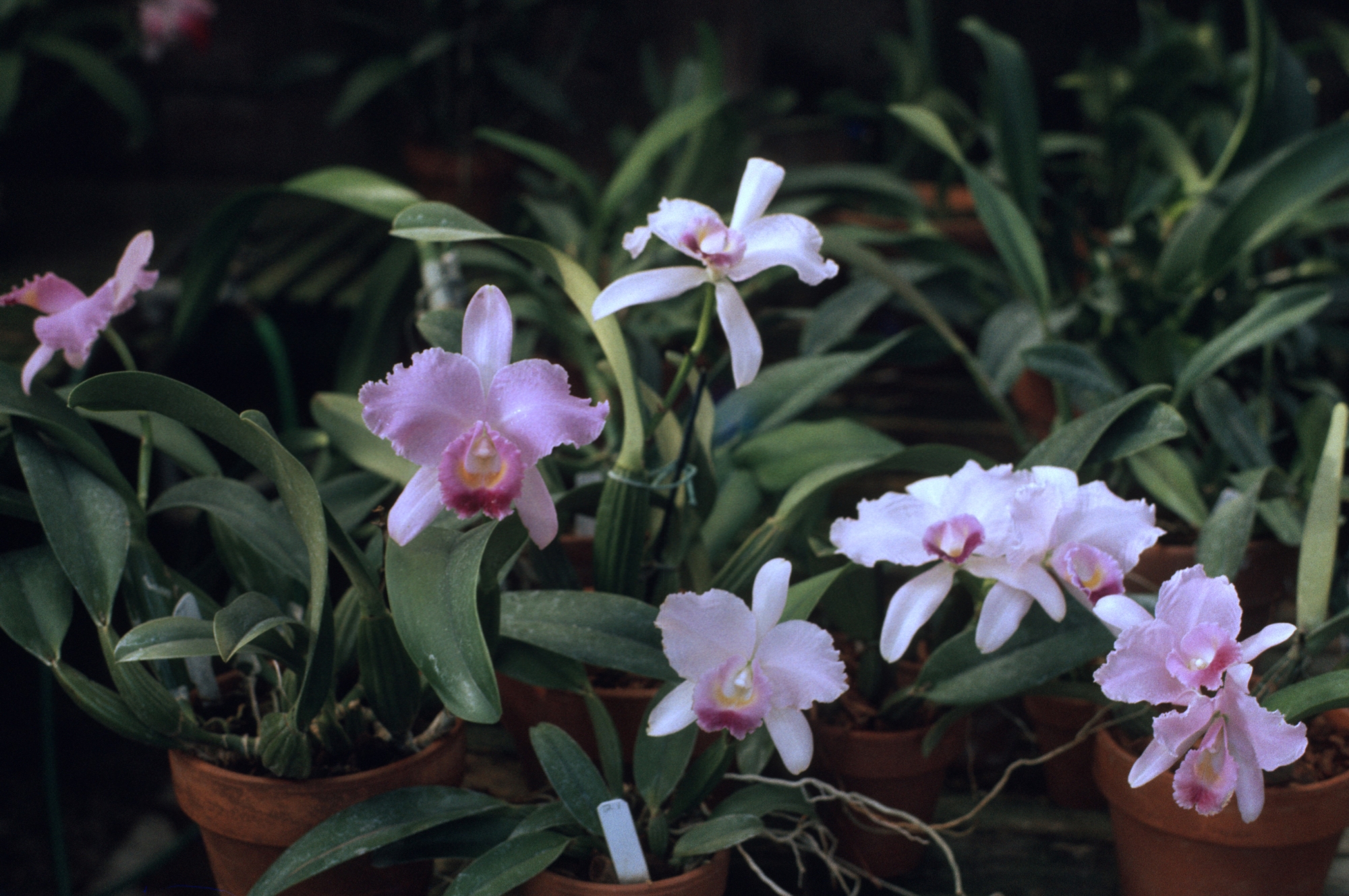
Cattleya trianae 'Blue Bird' F3 progeny, January, 1973
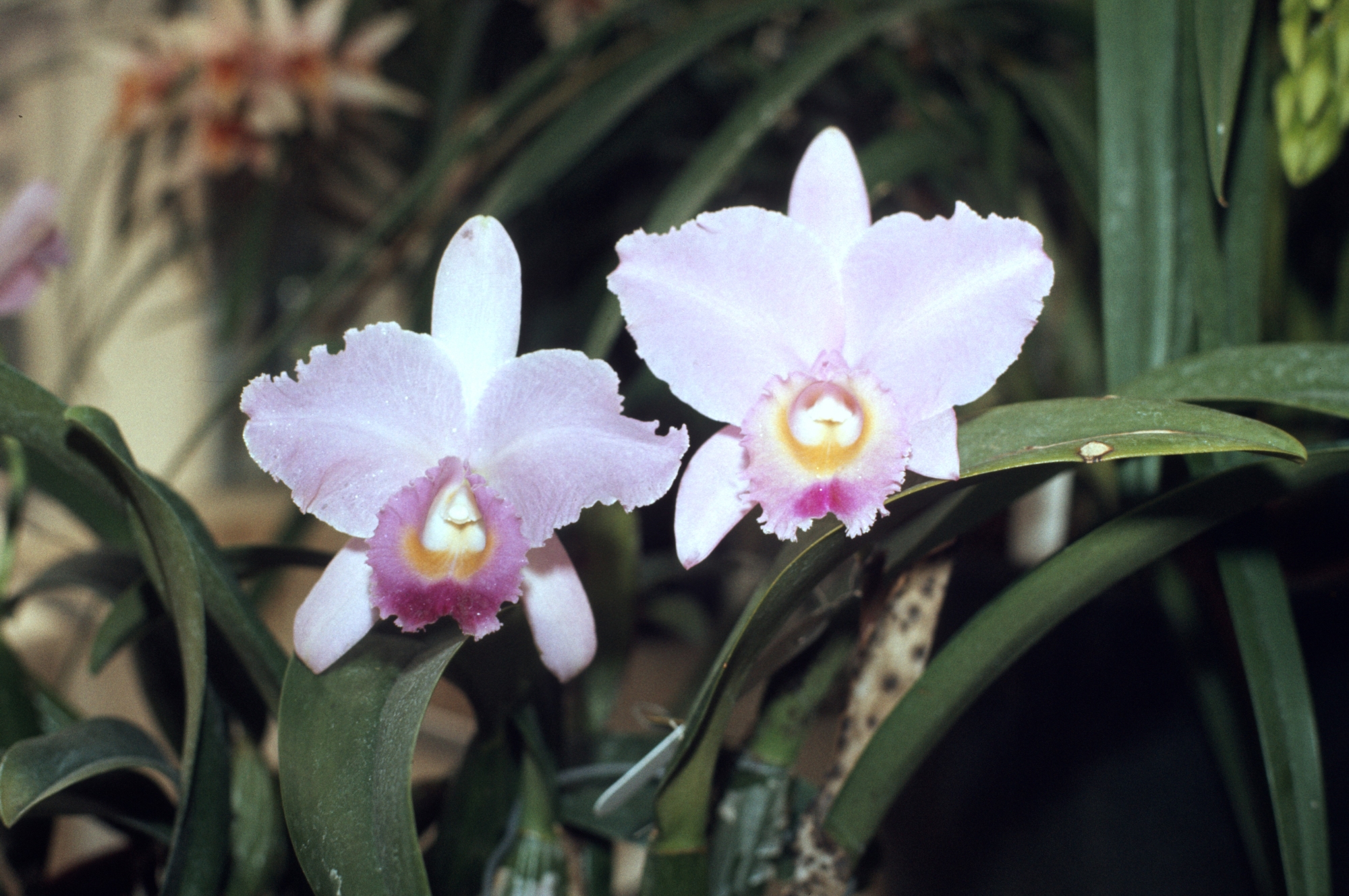
Cattleya trianae 'Blue Bird' F3 progeny, February, 1973
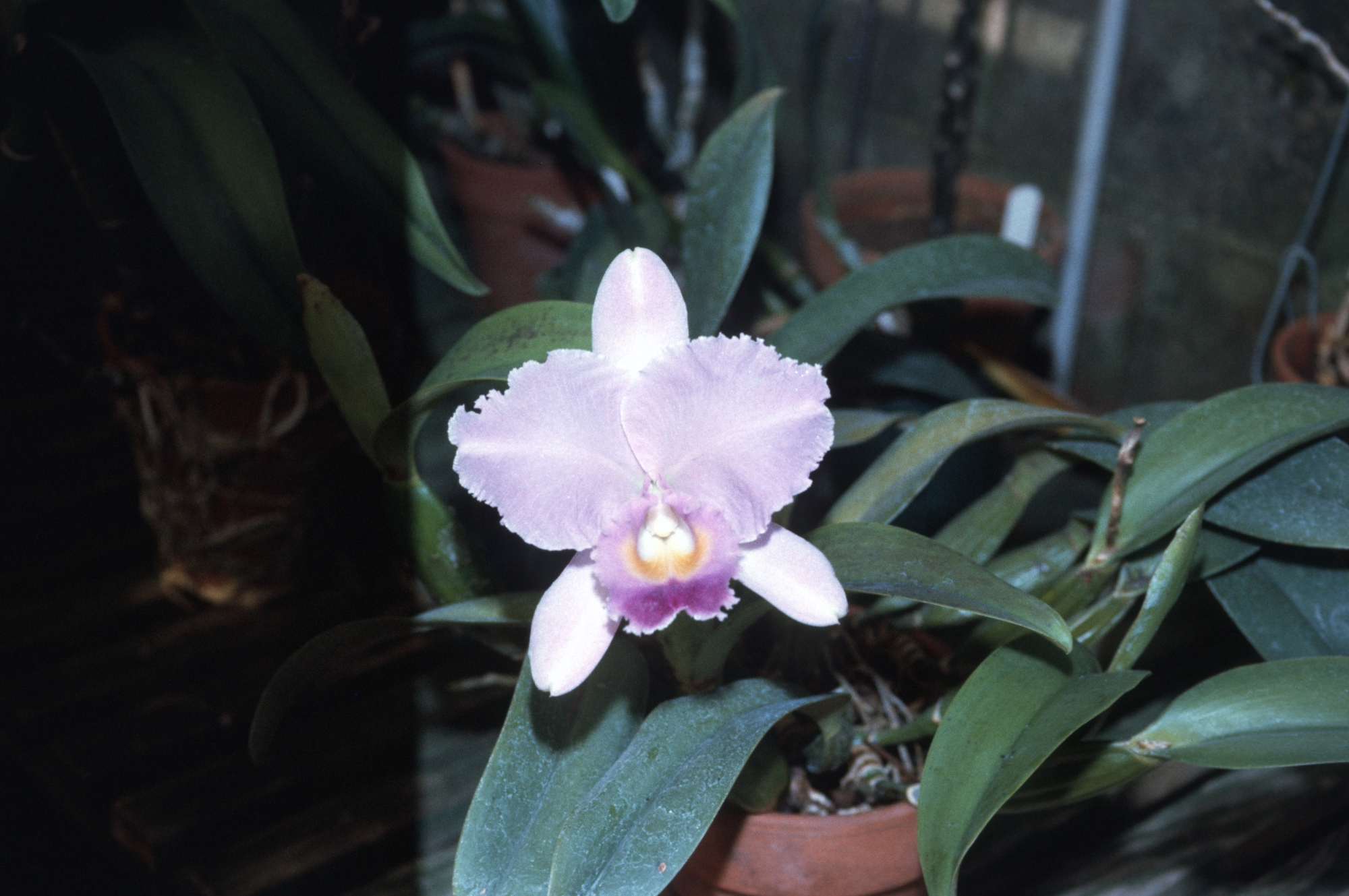
Cattleya trianae 'Blue Bird' F3 progeny, April, 1974
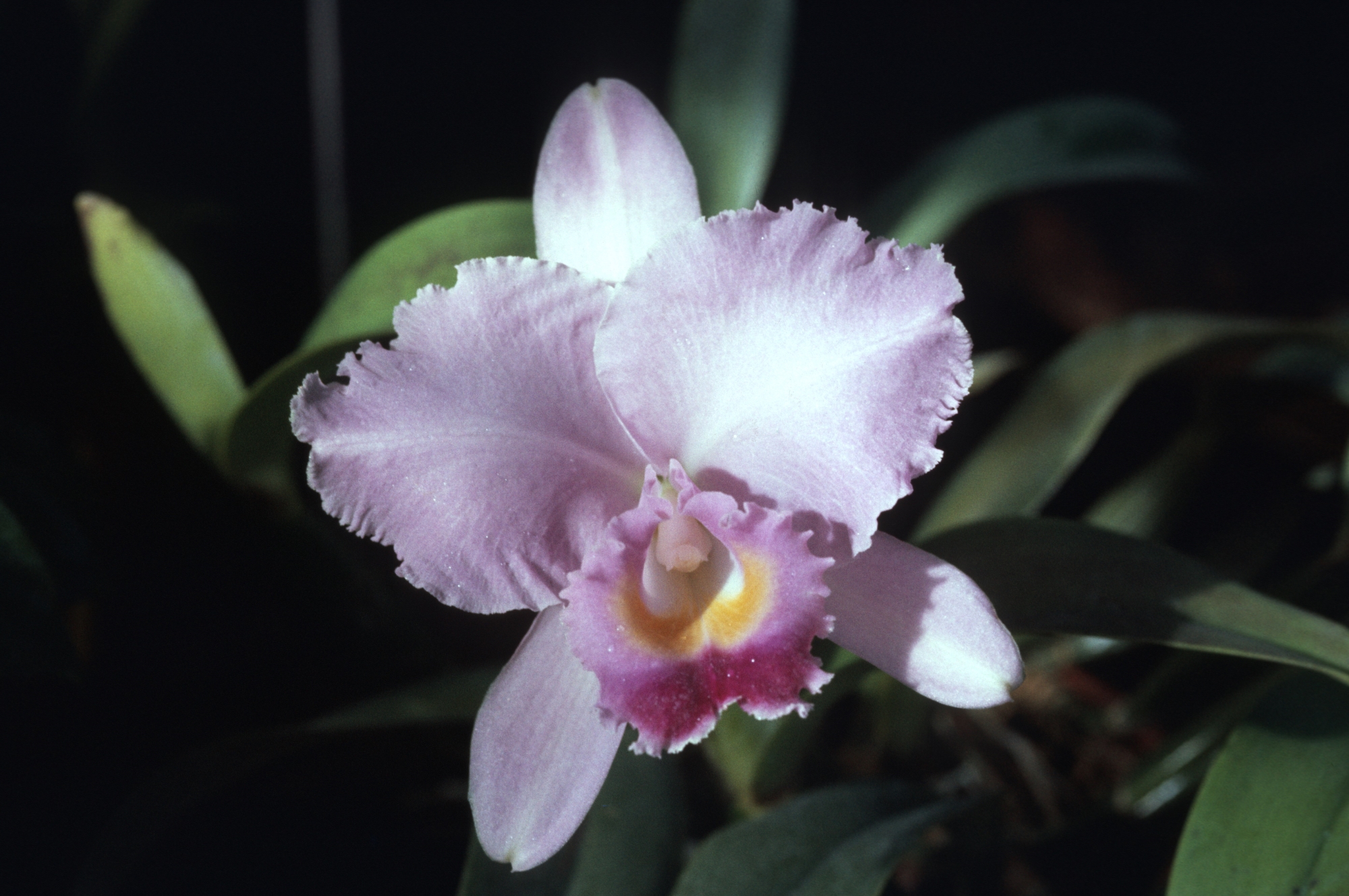
Cattleya trianae 'Blue Bird' F3 progeny, April, 1974
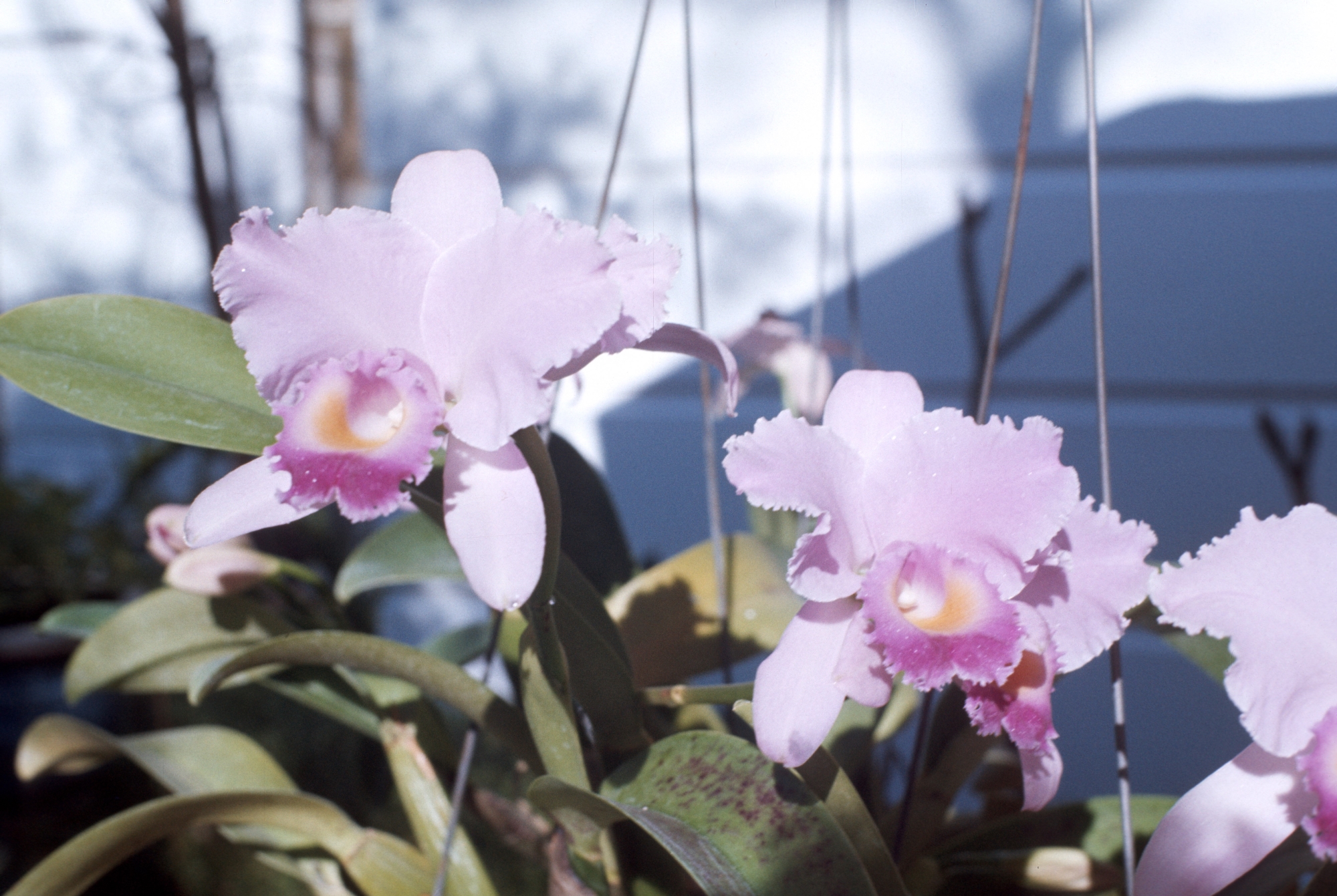
Cattleya trianae 'Blue Bird' F3, January, 1977
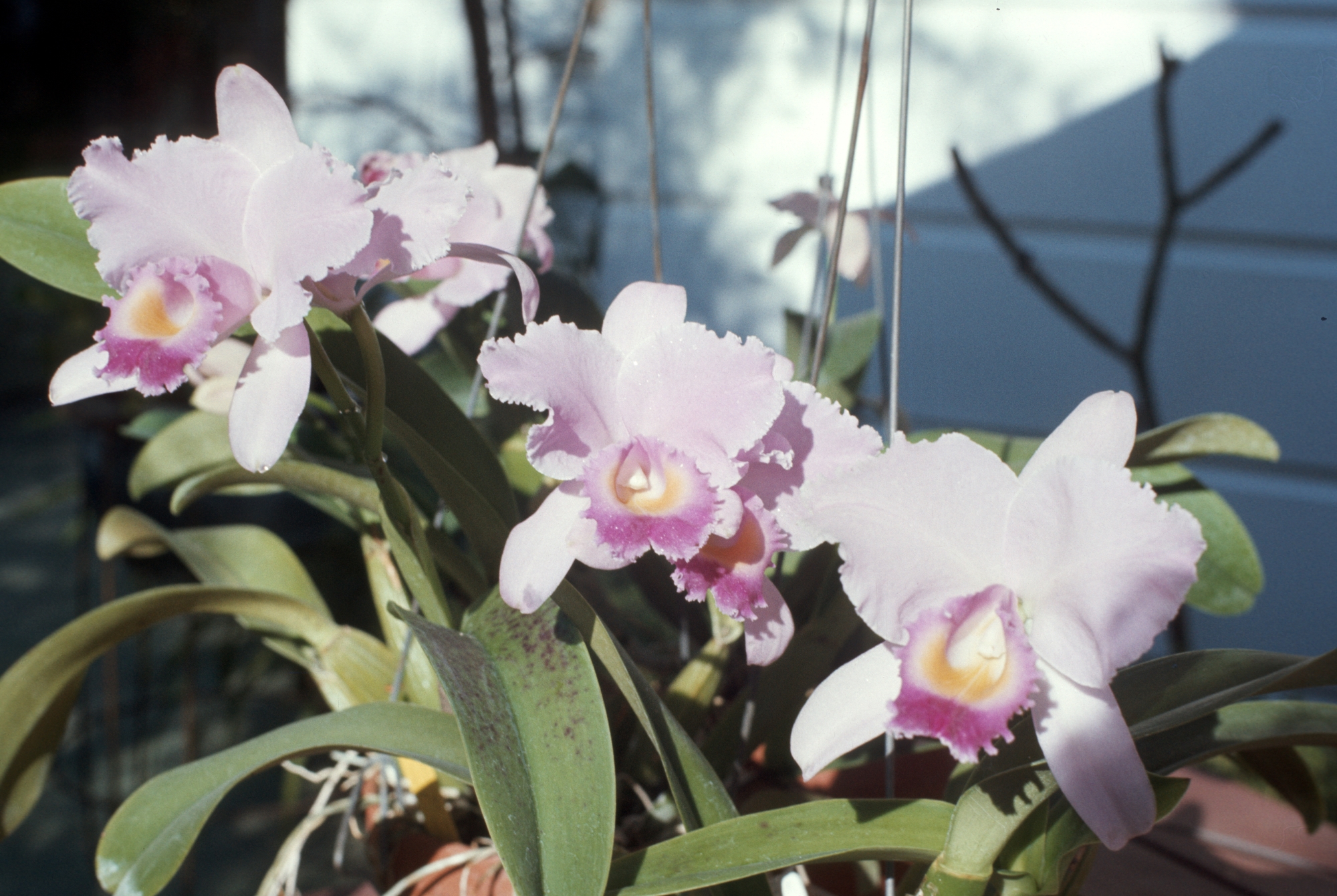
Cattleya trianae 'Blue Bird' F3 seedlings, January, 1977
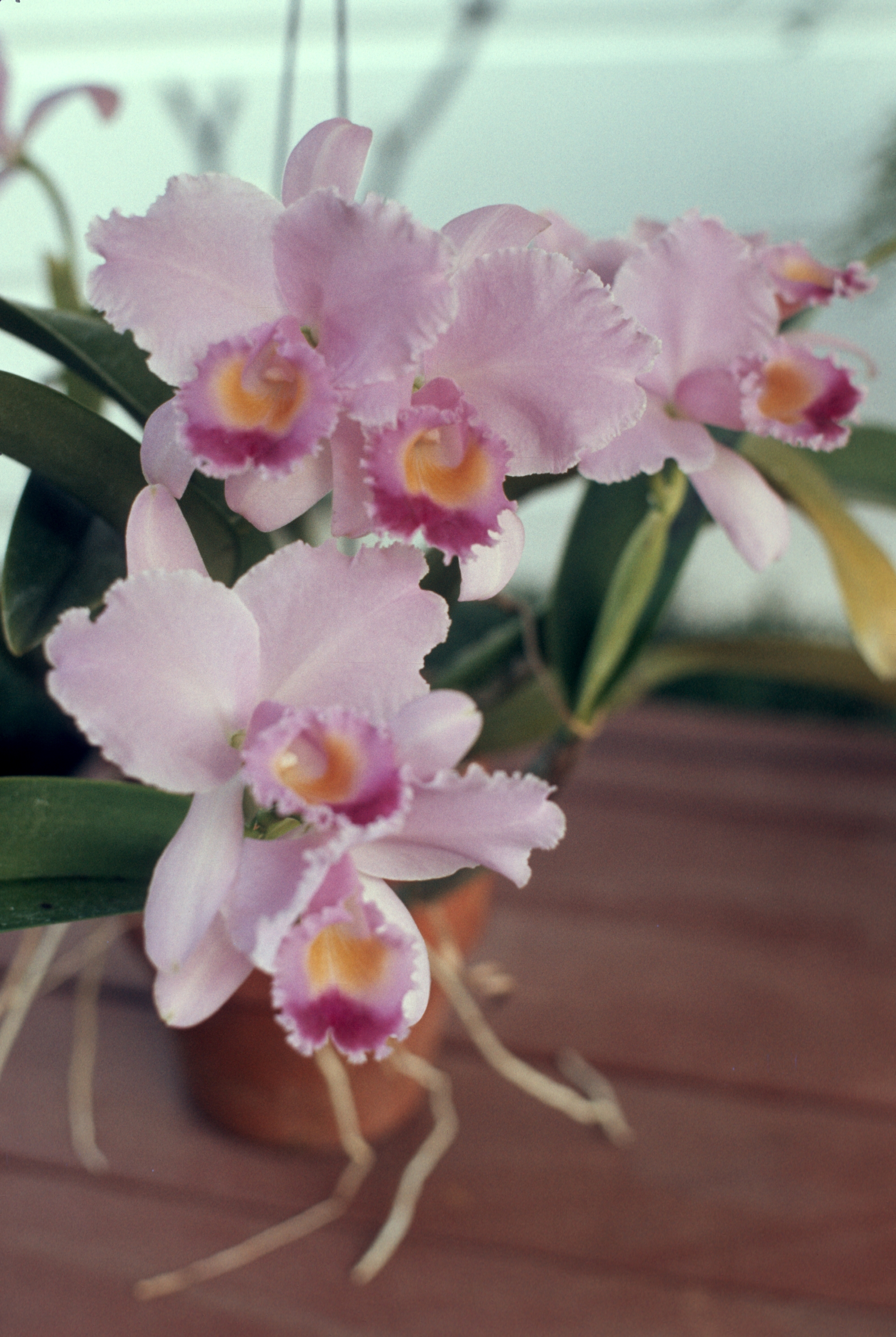
Cattleya trianae 'Blue Bird' F3, January, 1977
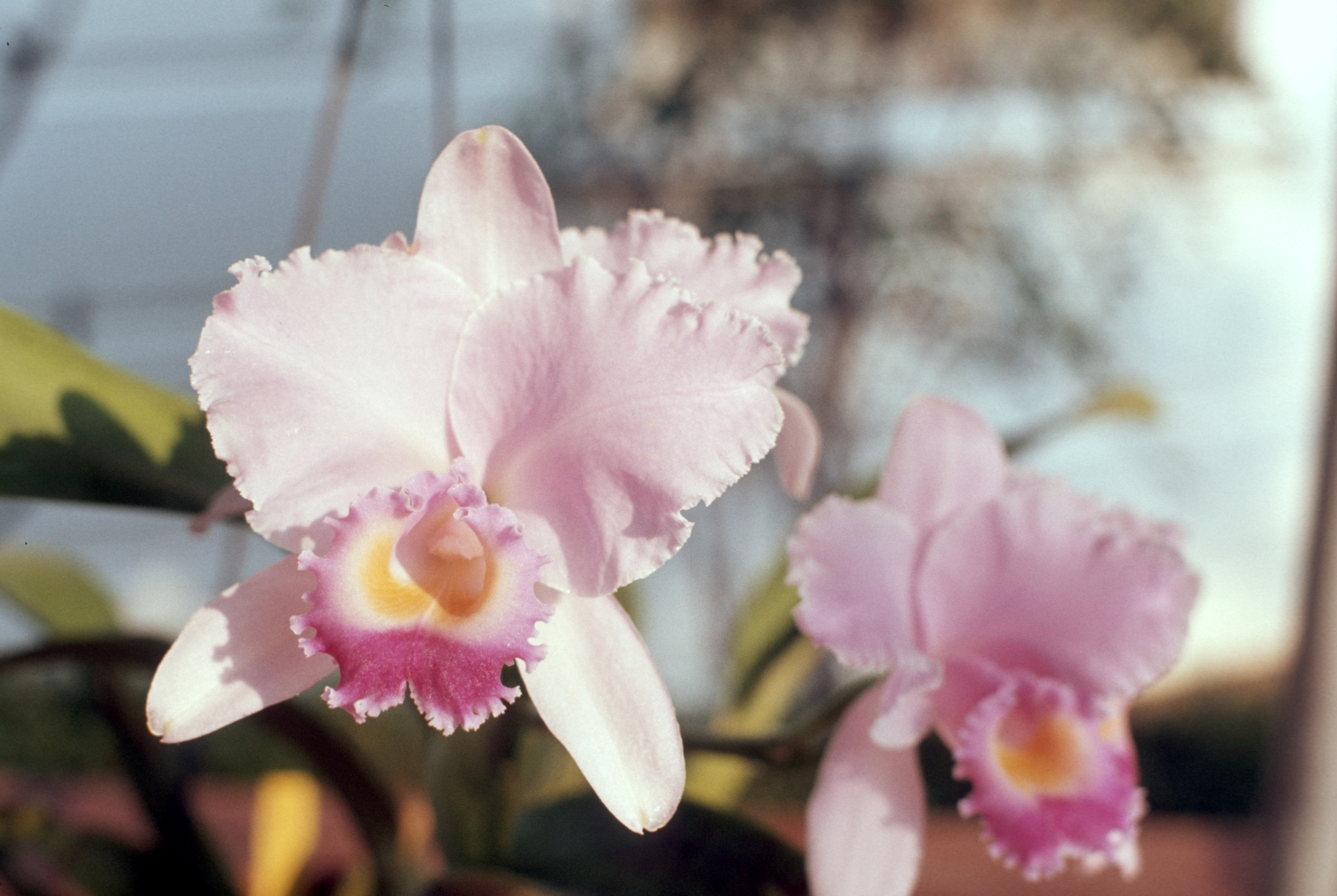
Cattleya trianae 'Blue Bird' F3, January, 1977
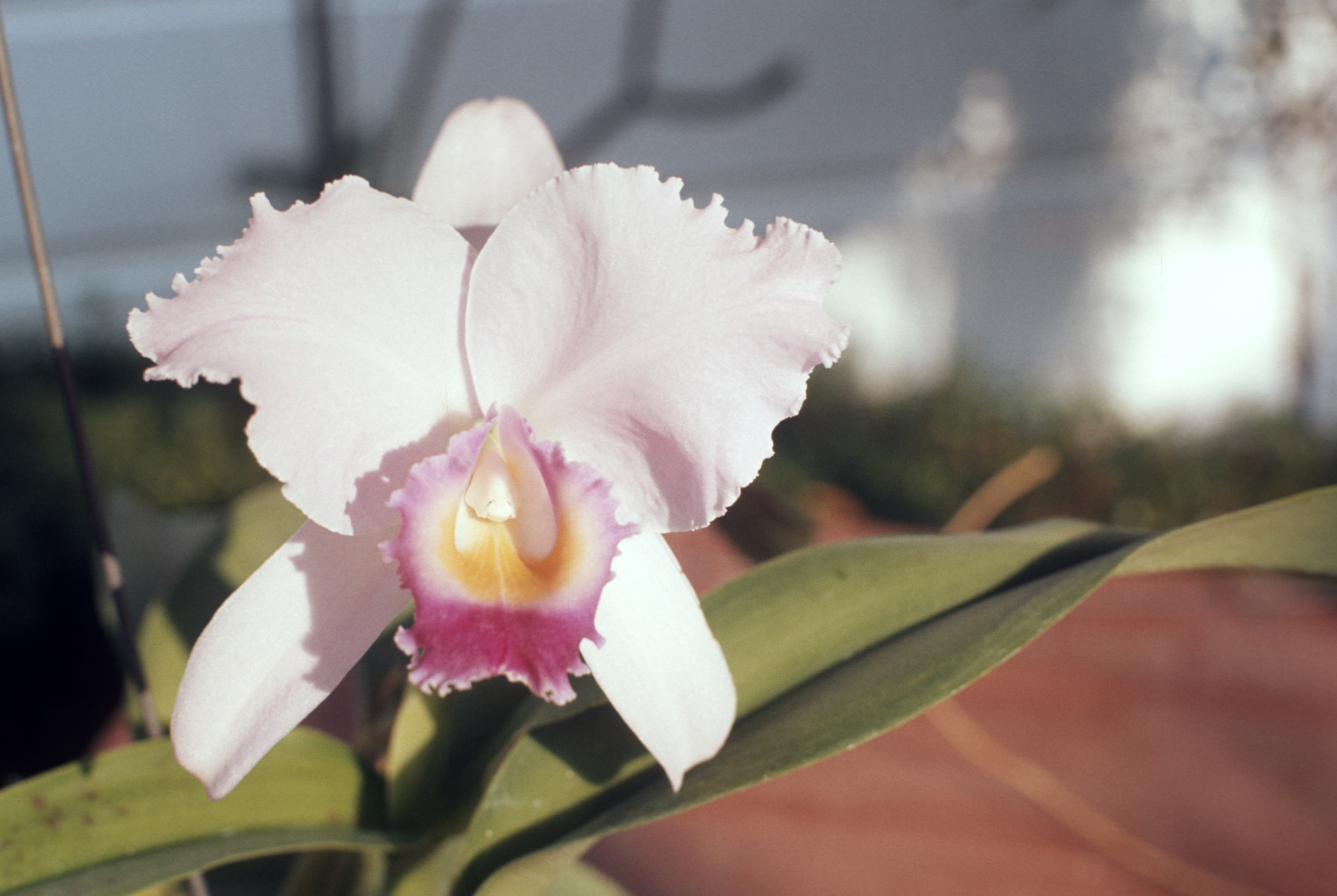
Cattleya trianae 'Blue Bird' F3, January, 1977
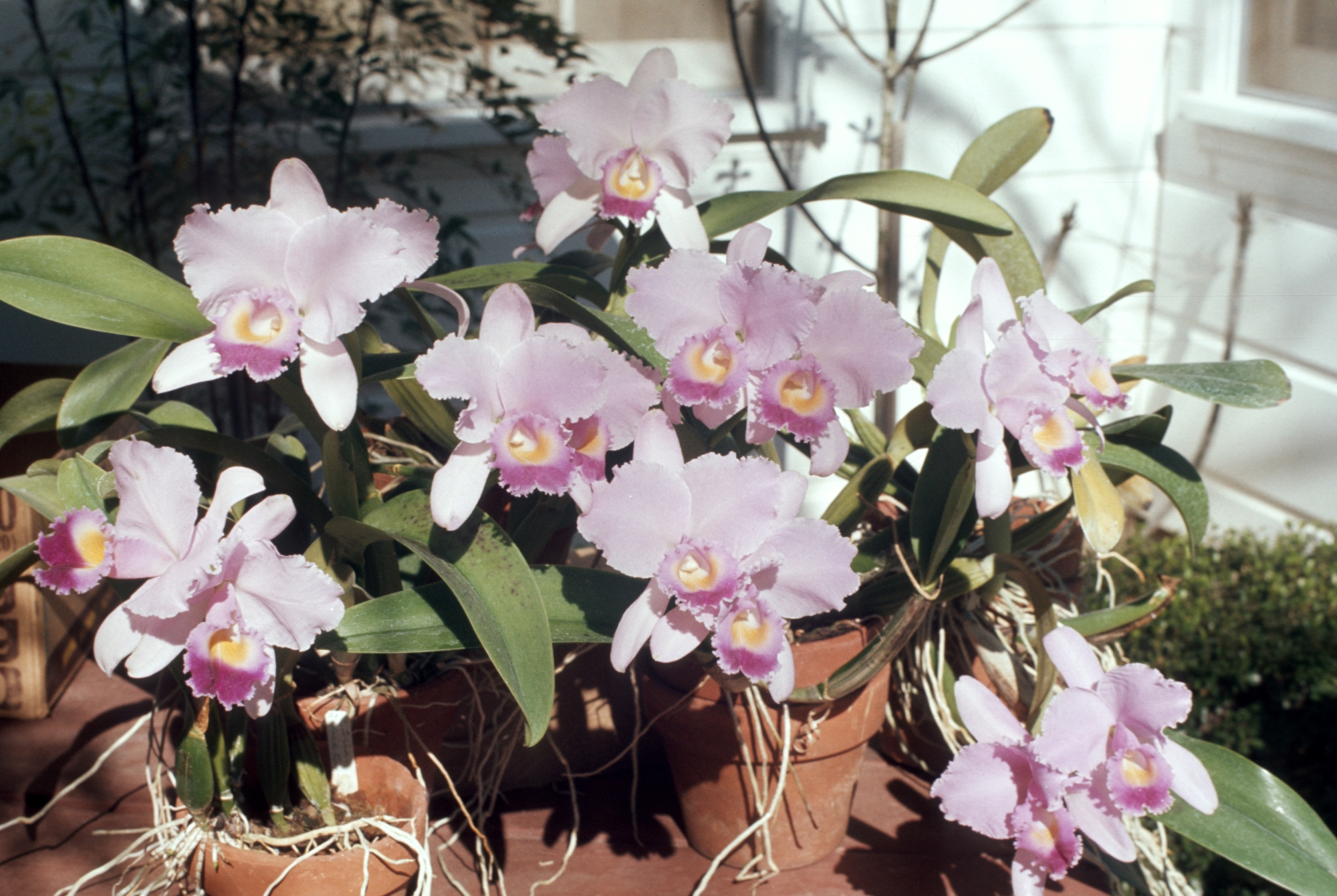
Cattleya trianae 'Blue Bird' F3, January, 1977
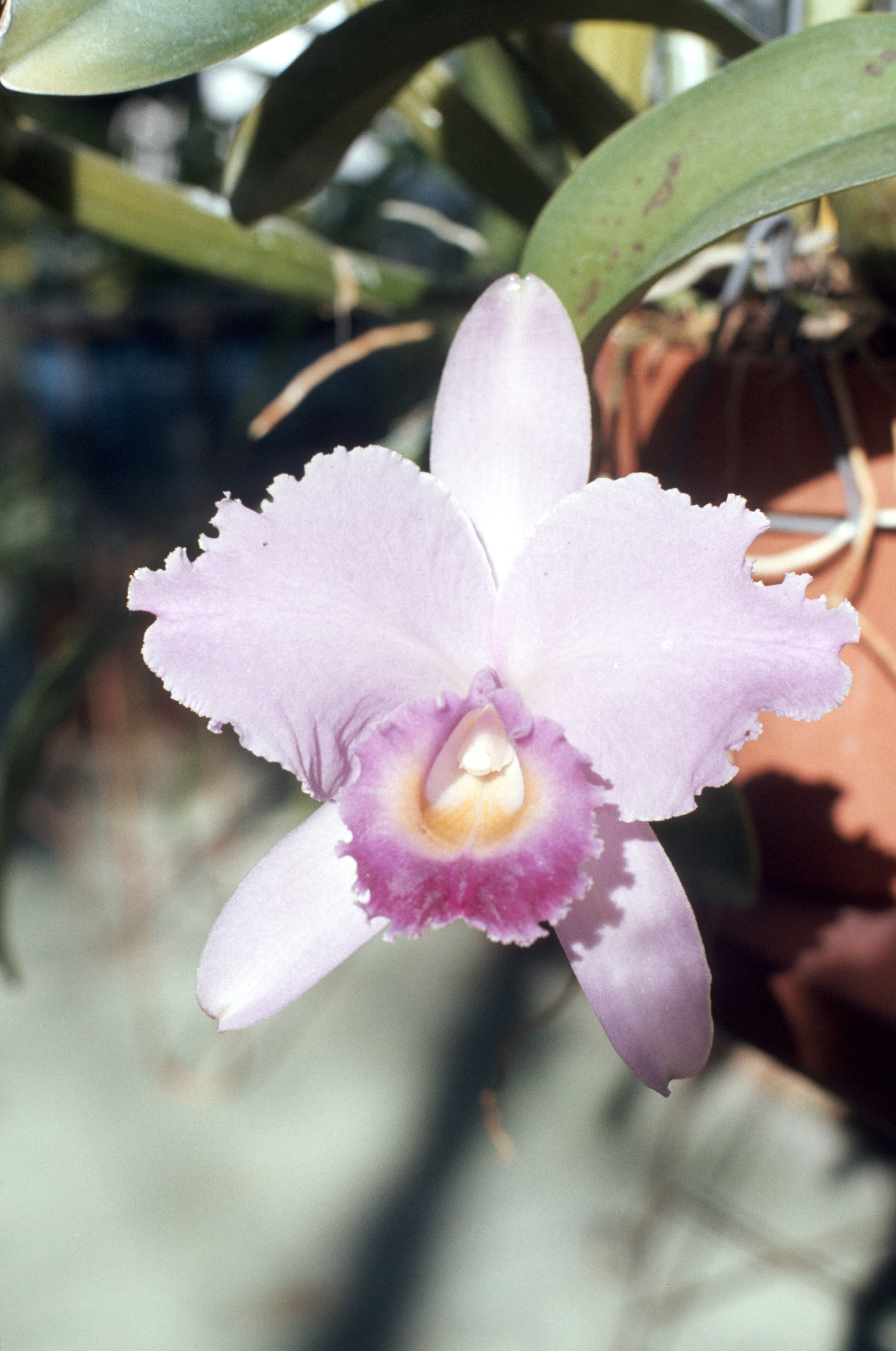
Cattleya trianae 'Blue Bird' F3, February, 1977
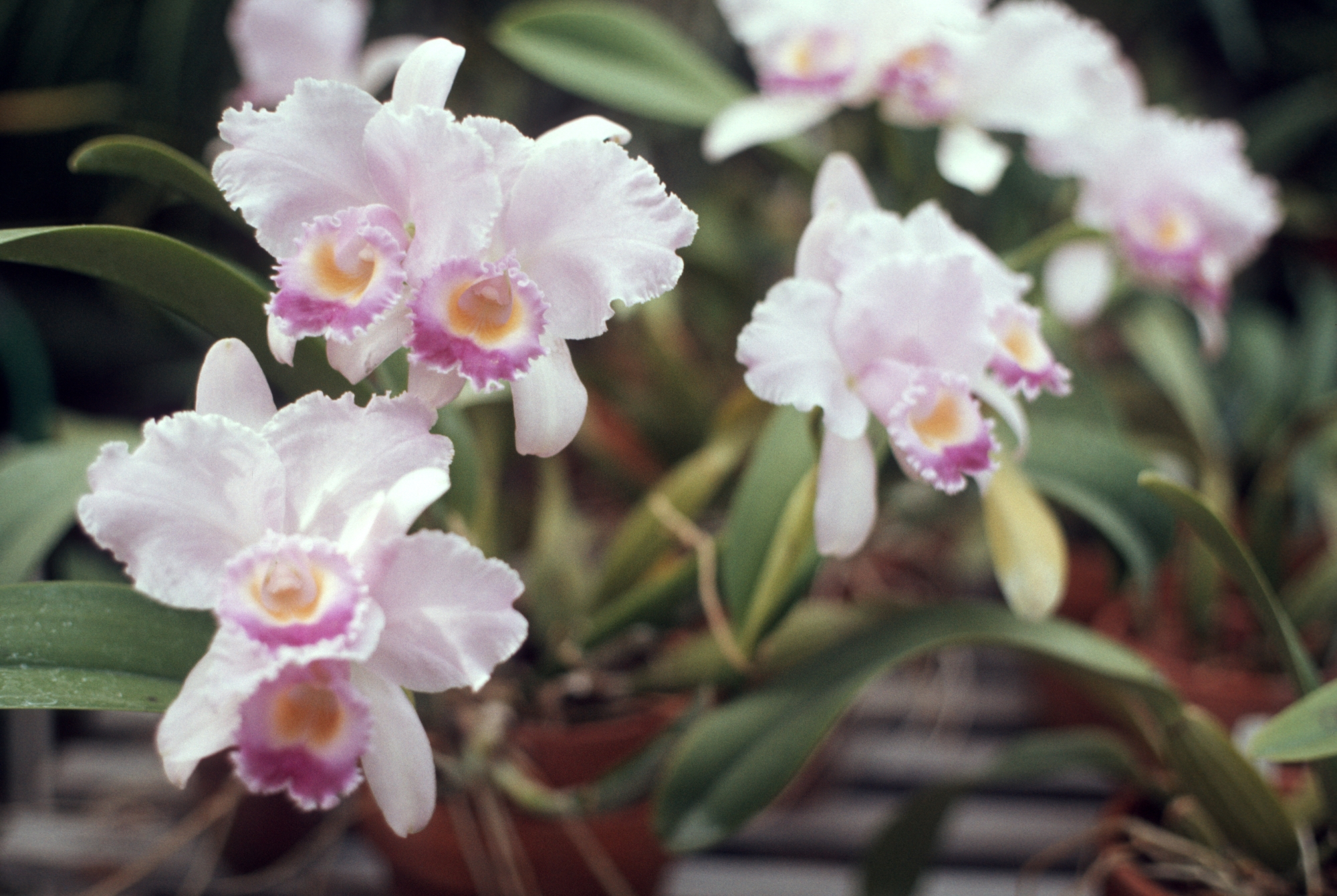
Cattleya trianae 'Blue Bird' F3, February, 1977
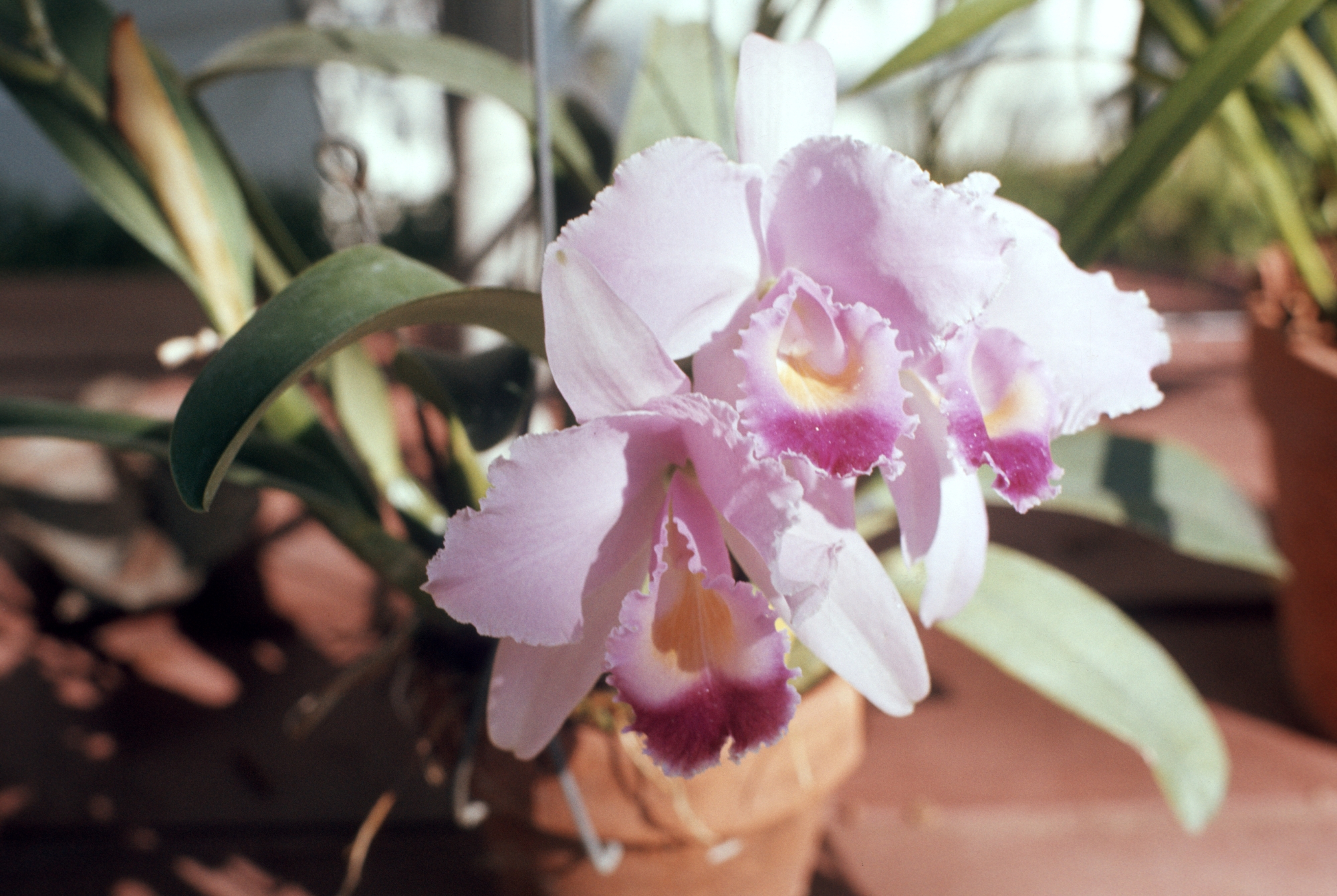
Cattleya trianae 'Blue Bird' F3, March, 1977
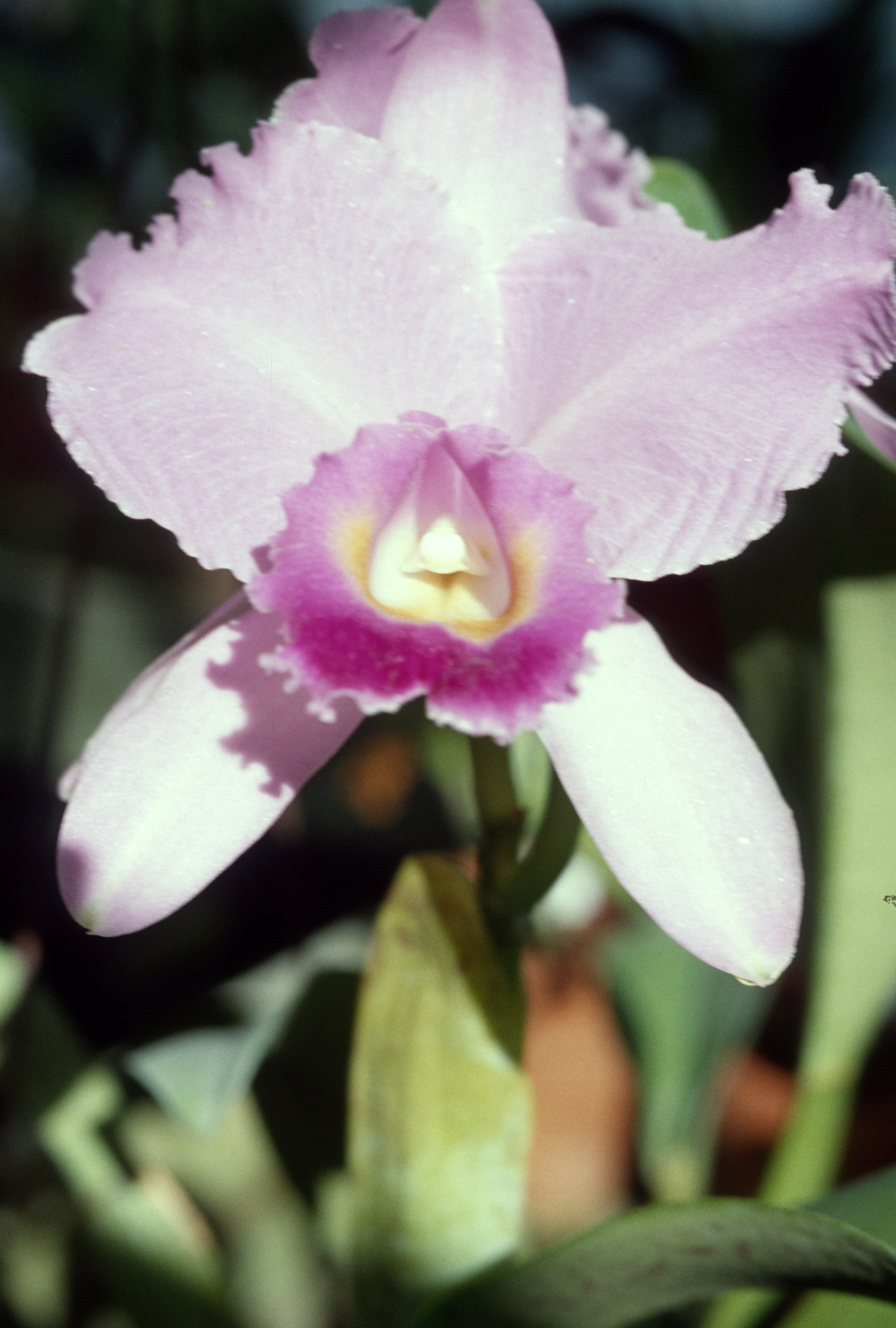
Cattleya trianae 'Blue Bird' F3, January, 1978
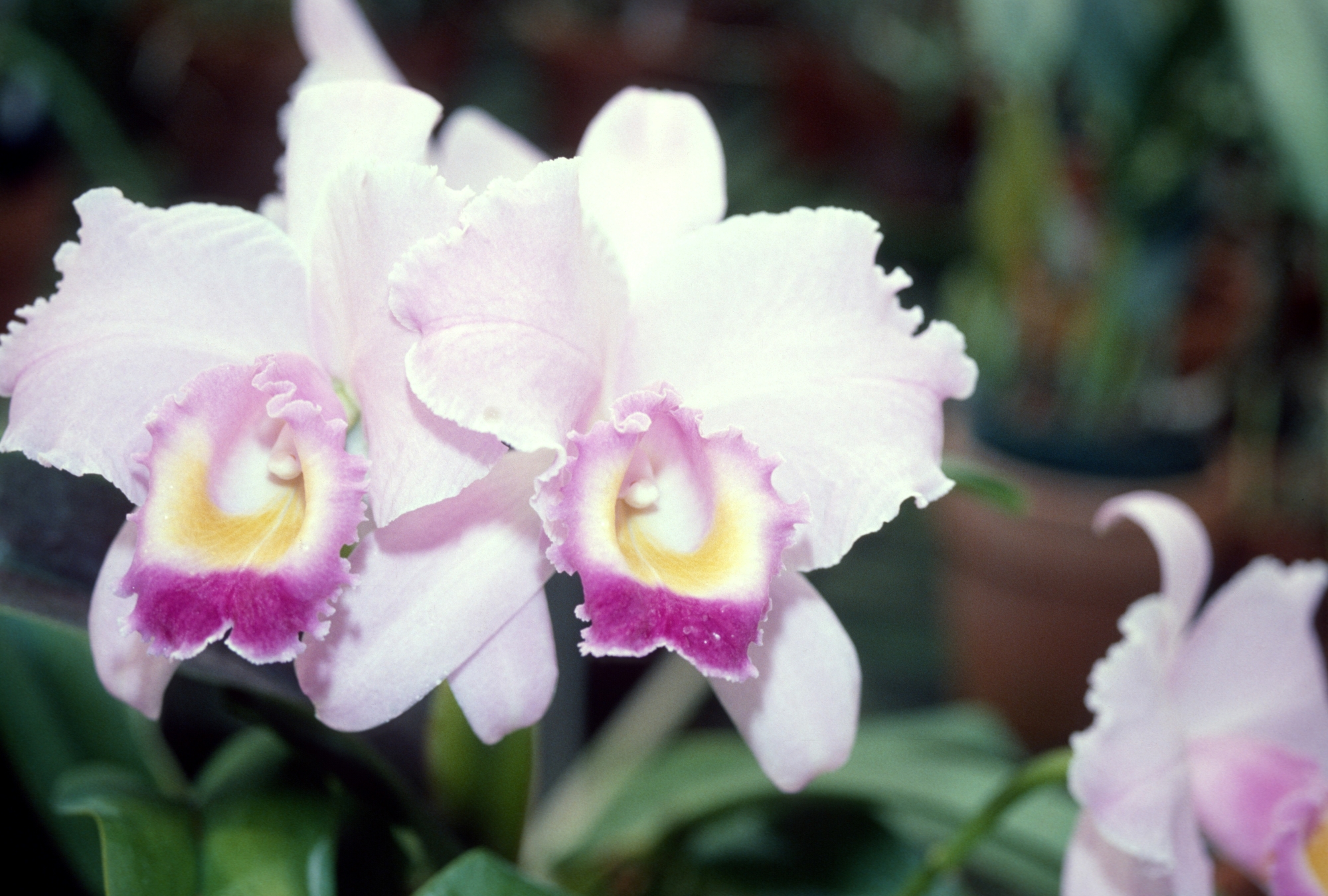
Cattleya trianae 'Blue Bird' F3, February, 1978
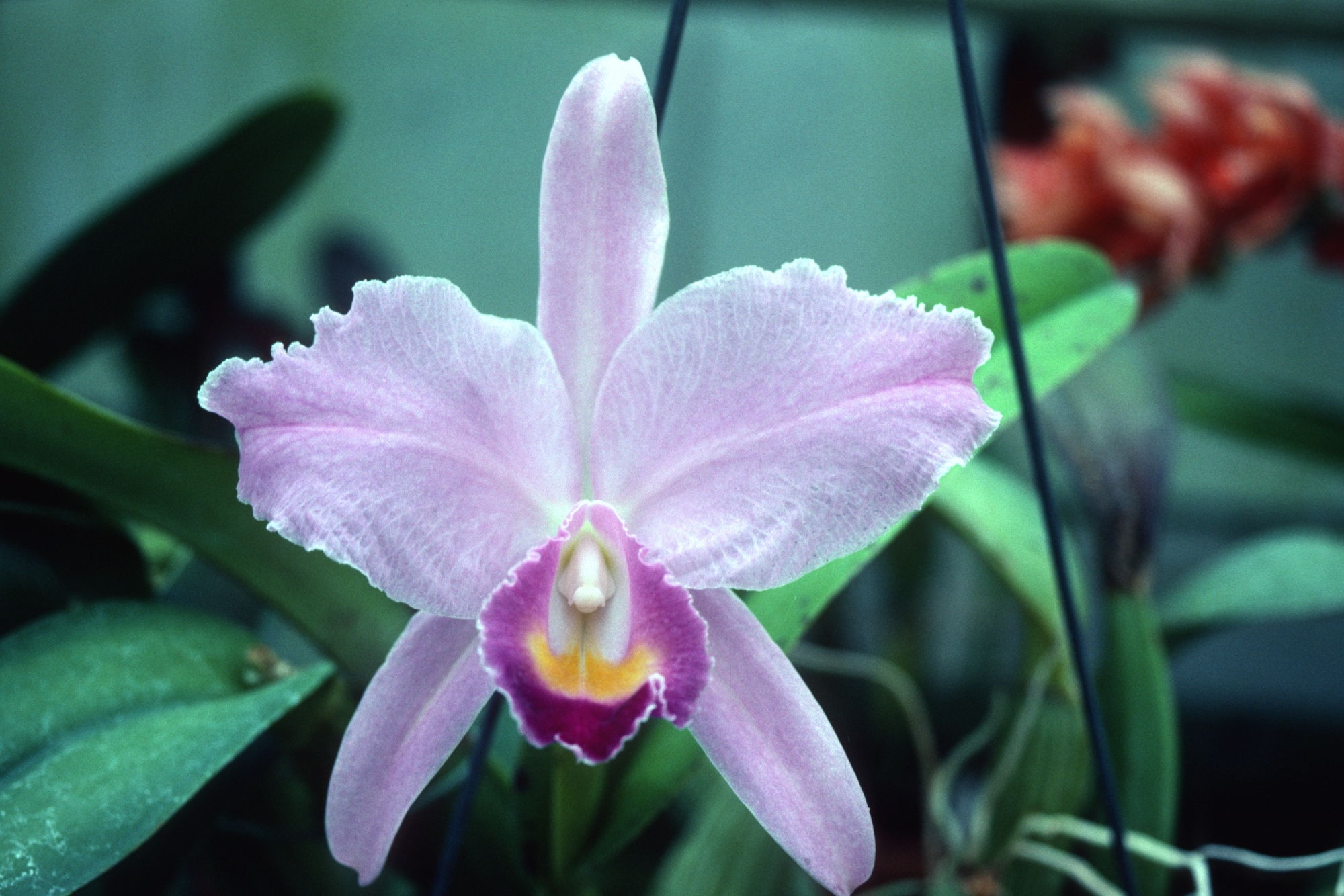
Cattleya trianae 'Blue Bird' F3, April, 1982
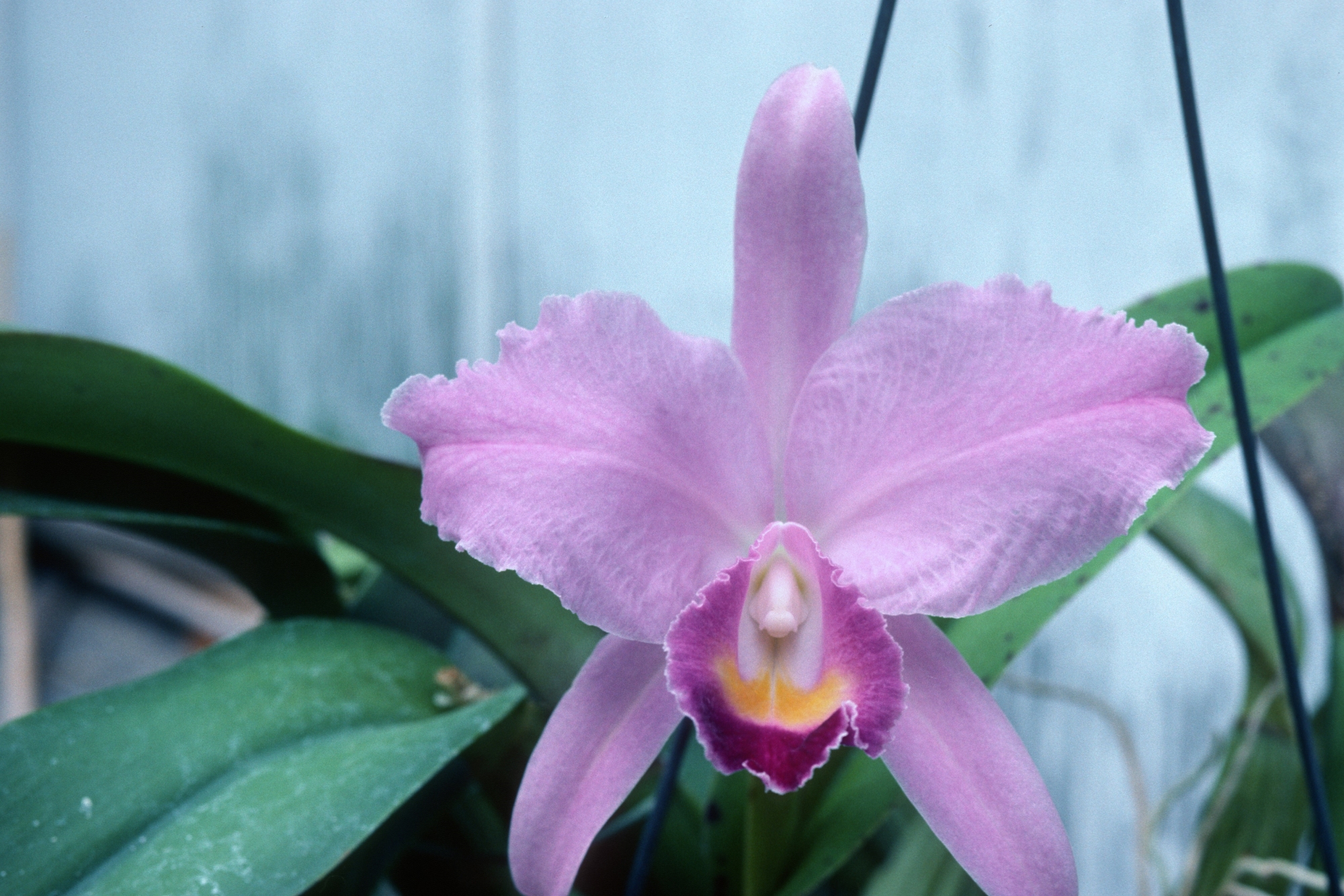
Cattleya trianae 'Blue Bird' F3, April, 1982
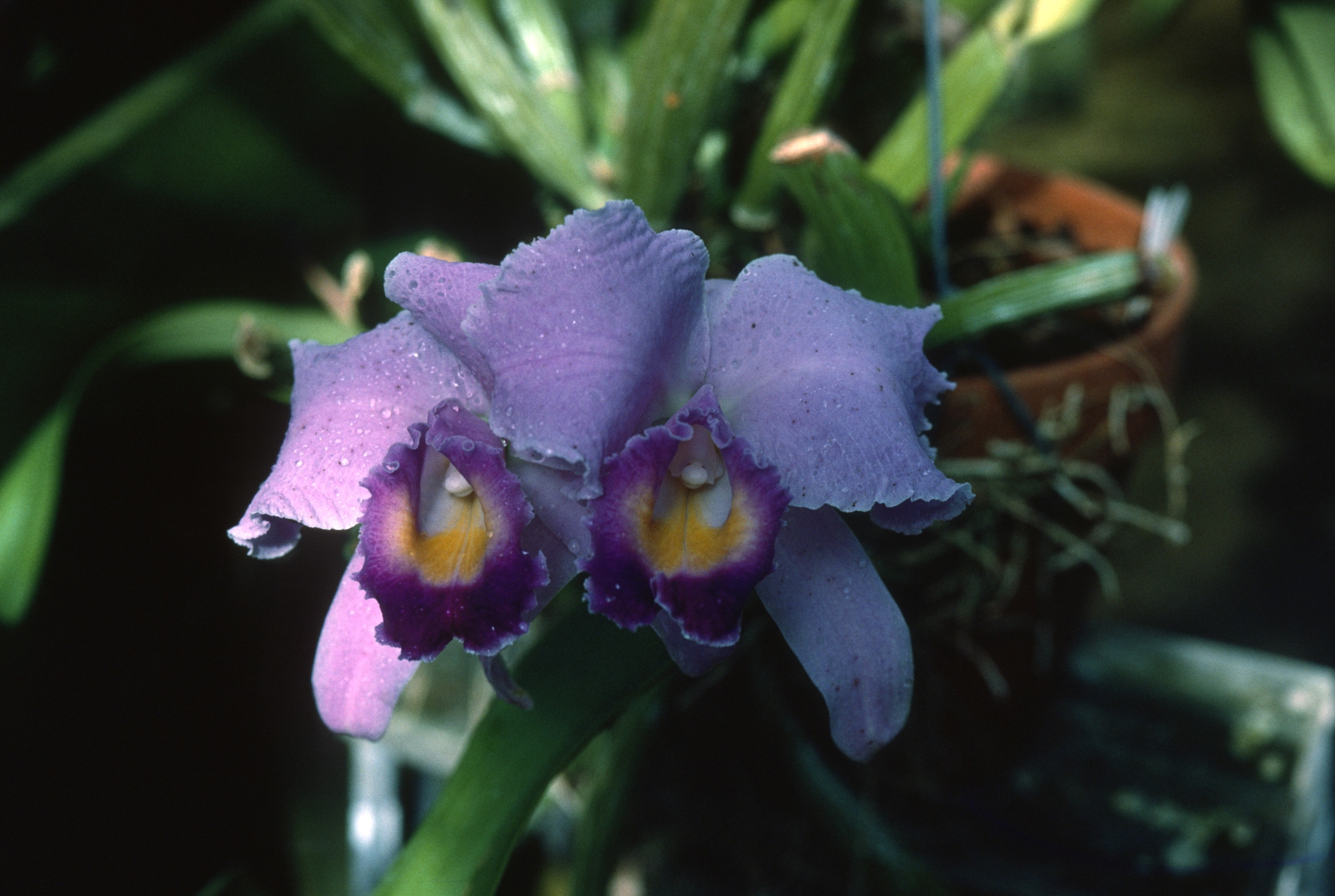
Cattleya trianae 'Blue Bird' F3, February, 1986
